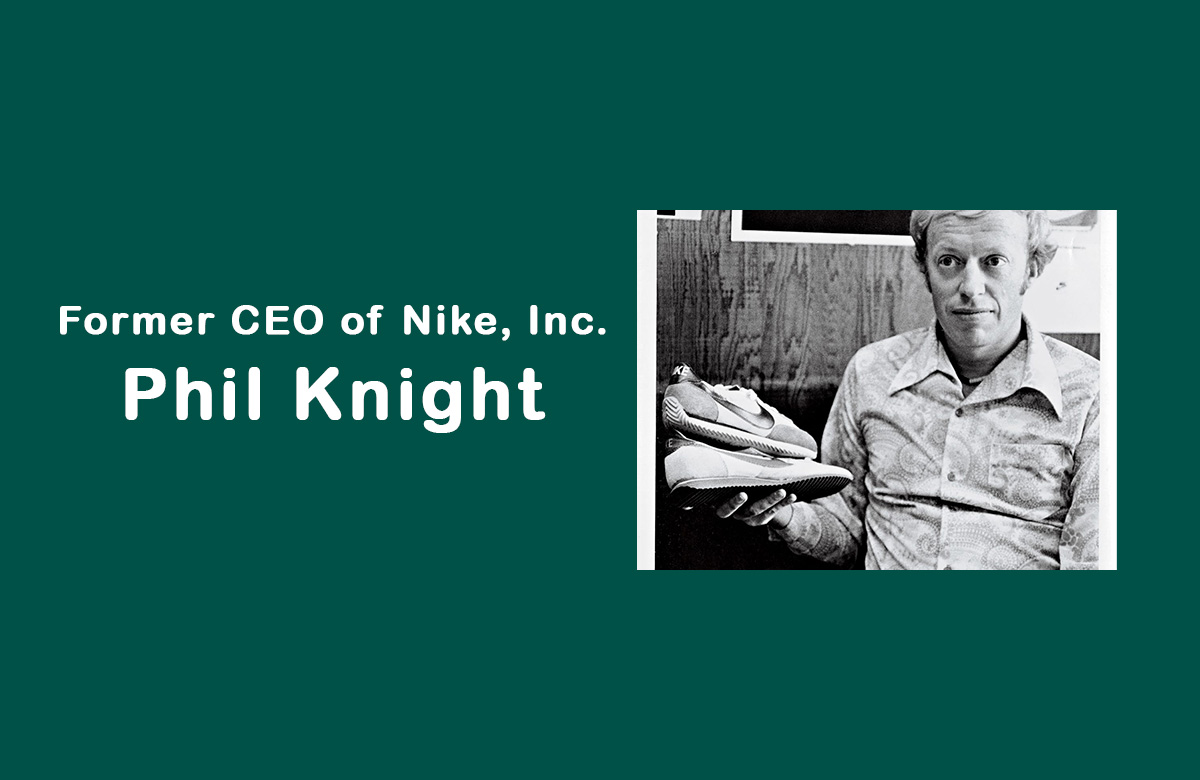In 1964, a young accounting graduate named Phil Knight had a bold idea. He believed that Japanese running shoes could outperform the German brands dominating the market at the time. With just $50 in capital , he started a small business importing athletic shoes from Japan — calling it Blue Ribbon Sports .
That tiny venture would soon become Nike , one of the most iconic and valuable brands in the world, known for its swoosh logo , groundbreaking advertising, and partnerships with athletes like Michael Jordan , Serena Williams , and Cristiano Ronaldo .
This is the inspiring story of how Phil Knight turned a simple import business into a global sportswear giant — proving that big dreams can start with small steps.
Early Life & Background
A Runner With an Entrepreneurial Mind
Born in 1938 in Portland, Oregon, Philip Hampson Knight grew up surrounded by sports and business. His father was a newspaper editor and publisher, while his mother was a homemaker who encouraged him to pursue his passions.
Knight was not only a talented student but also a dedicated runner at the University of Oregon. His love for running sparked his interest in footwear performance.
After graduating, he joined the U.S. Army and later earned an MBA from Stanford Graduate School of Business , where he wrote a paper arguing that Japanese companies could make high-quality running shoes more affordably than European brands.
That paper became the foundation of what we now know as Nike.
The Birth of Nike
From Blue Ribbon Sports to Swoosh Empire
In 1964, Knight partnered with Bill Bowerman , his former track coach, and co-founded Blue Ribbon Sports (BRS) — importing Tiger brand running shoes from Japan.
At first, they sold shoes out of the trunk of Knight’s car at local track meets. But demand grew quickly, and by 1971, they decided to create their own brand — Nike , named after the Greek goddess of victory.
The Swoosh logo was designed by a graphic design student for just $35 — and today, it’s one of the most recognized logos in the world.
Growth and Innovation
Creating a Global Brand
Nike didn’t just sell shoes — it created a lifestyle brand around sports, fitness, and self-improvement.
Key milestones in Nike’s growth:
- 1971 : First “Just Do It” ad campaign launched
- 1985 : Signed rookie basketball player Michael Jordan to a shoe deal — launching the Air Jordan line
- 1990s–2000s : Expanded into apparel, accessories, and digital products
- 2006 : Launched Nike+ with Apple to integrate technology into fitness
- 2017 : Became the first sportswear company to hit $100 billion in annual revenue
Nike also embraced innovation through:
- Flyknit fabric technology
- Air sole cushioning
- Sustainable materials (e.g., Nike Air Vapor)
- Customization via Nike By You
Today, Nike operates in more than 170 countries , with over 80,000 employees , and a market cap exceeding $150 billion.
Impact on Culture and Sport
More Than Just a Shoe Company
Nike has shaped modern culture in powerful ways:
| AREA | INFLUENCE |
| Sports | Redefined athletic performance and sponsorship |
| Fashion | Turned sneakers into fashion statements |
| Advertising | Set new standards with campaigns like “Just Do It” |
| Social Justice | Took bold stances on issues like racial equality and gender equity |
From sponsoring Colin Kaepernick to empowering female athletes globally, Nike continues to use its platform to inspire change — proving that business can be a force for good.
Business Lessons from Phil Knight
- Start Small, Think Big
Knight began with just $50 and a vision — showing that great companies often begin with humble beginnings. - Believe in Your Idea
Even when others doubted him, Knight stayed committed to his belief that Japanese-made shoes could compete with top European brands. - Take Risks
Signing Michael Jordan was a huge gamble — but it paid off beyond anyone’s expectations. - Build Great Teams
Knight relied on people like Bill Bowerman and later Sara Blakely (yes, the Spanx founder) to help shape Nike’s strategy and branding. - Stay Focused on the Customer
Nike always prioritized athlete performance and consumer experience — which helped build lasting loyalty.
Motivational Takeaways

Phil Knight’s journey offers powerful lessons for entrepreneurs and dreamers alike:
| LESSION | EXPLANATION |
| Follow Your Passion | Knight loved running — and built a business around it. |
| Turn Ideas Into Action | Many have ideas — few act on them. |
| Embrace Change | Nike evolved from selling imported shoes to creating a global lifestyle brand. |
| Invest in People | Great companies are built by great teams. |
| Think Beyond Profit | Nike proves that purpose-driven marketing builds deeper connections. |
Conclusion – From Track to Global Icon
Phil Knight’s rise from a runner with a $50 idea to the founder of a global sportswear empire is a testament to vision, perseverance, and belief in oneself .
His story teaches us that great success often starts with a simple idea , backed by persistence, innovation, and a deep understanding of what people want.
Whether you’re building a startup or chasing a dream, remember Knight’s philosophy:
Don’t ask if your idea will work — just try it.
Stay focused. Stay passionate. And never stop moving forward.
